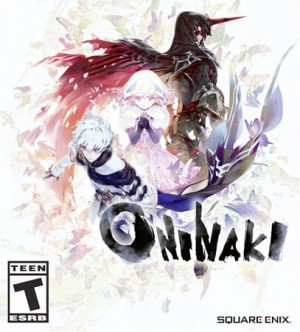Switch, PC
In the world of Oninaki, death is inevitable, but the aftermath is different. Spirits who are grieved may become shackled to the living world, so everyone tries to approach death with a practical stoicism. However, when playing Oninaki, maintaining that kind of measured neutrality is impossible. This is an action/RPG full of highs and lows, with erratic swings between the two extremes that had me loving it one minute and hating it the next.
The last two games from developer Tokyo RPG Factory (Lost Sphear, I am Setsuna) emulate classic turn-based titles, but Oninaki has more in common with Diablo than Final Fantasy. You control a Watcher, a warrior who can cross the veil to the spirit realm and bond with wayward souls. These souls (called daemons) serve as your companions in battle, giving you weapons and abilities to manage hordes of encroaching enemies. Each daemon effectively serves as a complete build with different strengths and weaknesses, and you can swap among them freely. The speedy scythe daemon is great for mobility and crowd control, while the long-range gun daemon allows you to handle encounters from a distance. When Oninaki is at its best, you are taking down many foes by switching among your favorite daemons, deciding where and when to fire off special moves, and collecting the spoils left behind. It isn’t intricate, but it conveys a satisfying sense of power.
Click here to watch embedded media
Beyond the basic loop, I also got hooked by the daemons’ layers of progression. They all have individual skill trees, and you earn points to spend the more you use each ally, encouraging you to keep a rotating stable. In addition to passive and active abilities, the skill tree unlocks memories that tell the story of each daemon and how their lives ended, which adds a cool narrative incentive to experiment with your full range of options.
Diving into these interlocking systems was my favorite part of the whole experience, but the depth in the menus doesn’t always translate to gameplay. The enemy types and formations aren’t diverse enough to require many different strategies. On one hand, that means that your favorite daemons and abilities never feel completely useless, but it also means that your approach to combat is more of an aesthetic choice than a tactical one. This fosters a creeping sense of pointlessness and repetition as you move from one linear dungeon to the next, because even as you gain new daemons, nothing seems to evolve in complexity.
Another major problem is how the battle system struggles to deliver on the boss fights. While most of the action seems tailored to accommodate many possible playstyles, some of the most critical encounters can only be defeated with a handful of viable strategies. Not only do these difficulty spikes feel unfair, but they also isolate players who may have invested in the “wrong” daemons. In these instances when timing and reactions are important, the sluggishness of the controls is especially damaging. If you didn’t spend your skill points on being able to cancel lag after certain maneuvers, you can easily find yourself helpless in the face of an onslaught, unable to dodge or heal as you watch your health drop.
Click image thumbnails to view larger version
During the first few hours, Oninaki’s haunting premise was its biggest draw for me. You jump between realms, undertaking missions for the dead to set their minds at ease. The quest resolutions have surprising and dark outcomes, and you get wrapped up in a plot about reincarnation and a world-eating demon. Those pillars sound cool, but as the story continues, nothing floods in to fill the conceptual gaps. The plot beats and characters all feel like items on a narrative outline, but with none of the connective tissue that makes the events or motivations compelling. It feels like you’re watching the summary of a story, rather than experiencing it yourself.
No single flaw in Oninaki is damning, nor is any good quality redemptive. Some parts of the experience are genuinely fun and engaging, and others are baffling and frustrating. Like the real world and spirit realm in the game, the light and dark sides of Oninaki blend together as you move between them, resulting in a dull glow somewhere in the middle.

Score: 7.5
Summary: This is an action/RPG full of highs and lows, with erratic swings between the two extremes that had me loving it one minute and hating it the next.
Concept: Explore the mysteries of the afterlife as you plow through monsters with the aid of different weapons, powers, and spirits
Graphics: The environments in Oninaki have a gorgeous simplicity, but the rest of the visuals have an unimpressive, low-budget vibe
Sound: The music seems sparse, but I enjoy it when it kicks in. The voice performances (which are in Japanese) are minimal
Playability: Sluggish controls keep the action from feeling as fast and furious as it wants to be, but the overall mechanics are intuitive
Entertainment: Combat is fun on a basic level, but repetition and a lack of evolution blunt that over time. The story and setting also fail to live up to their initial promise
Replay: Moderately low










